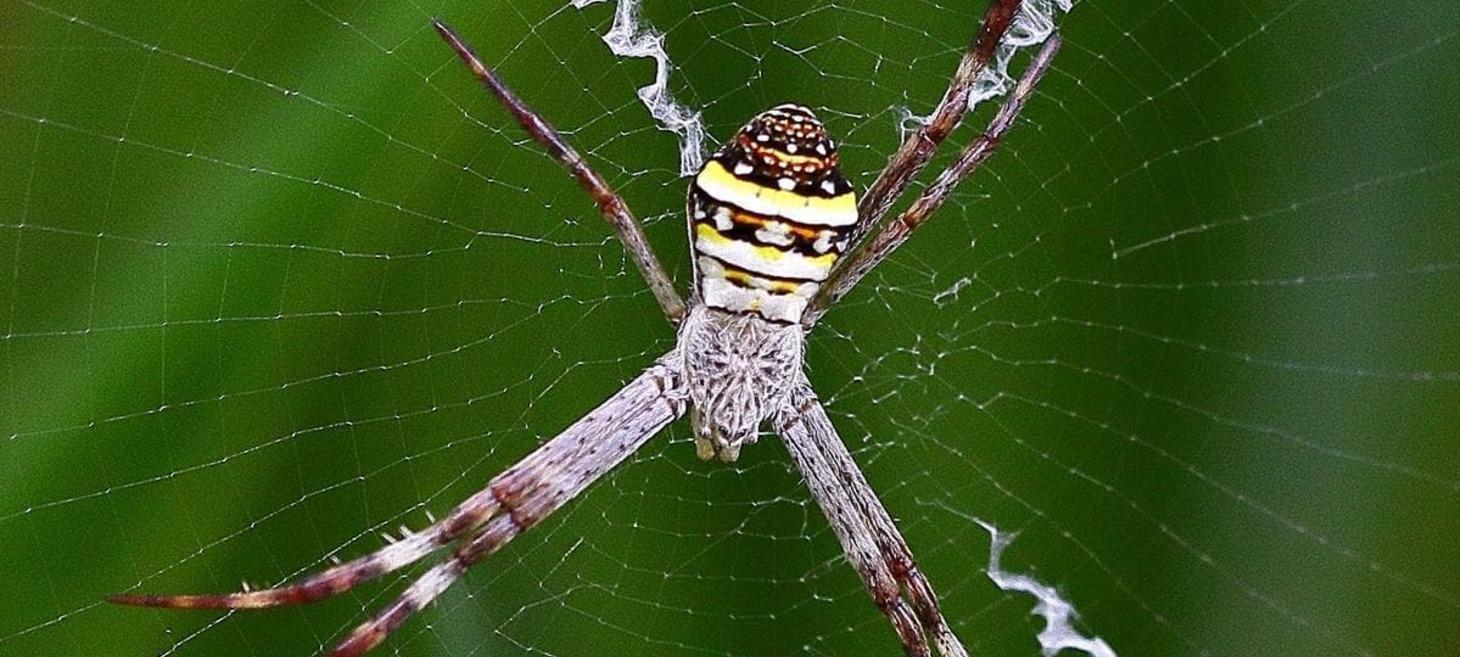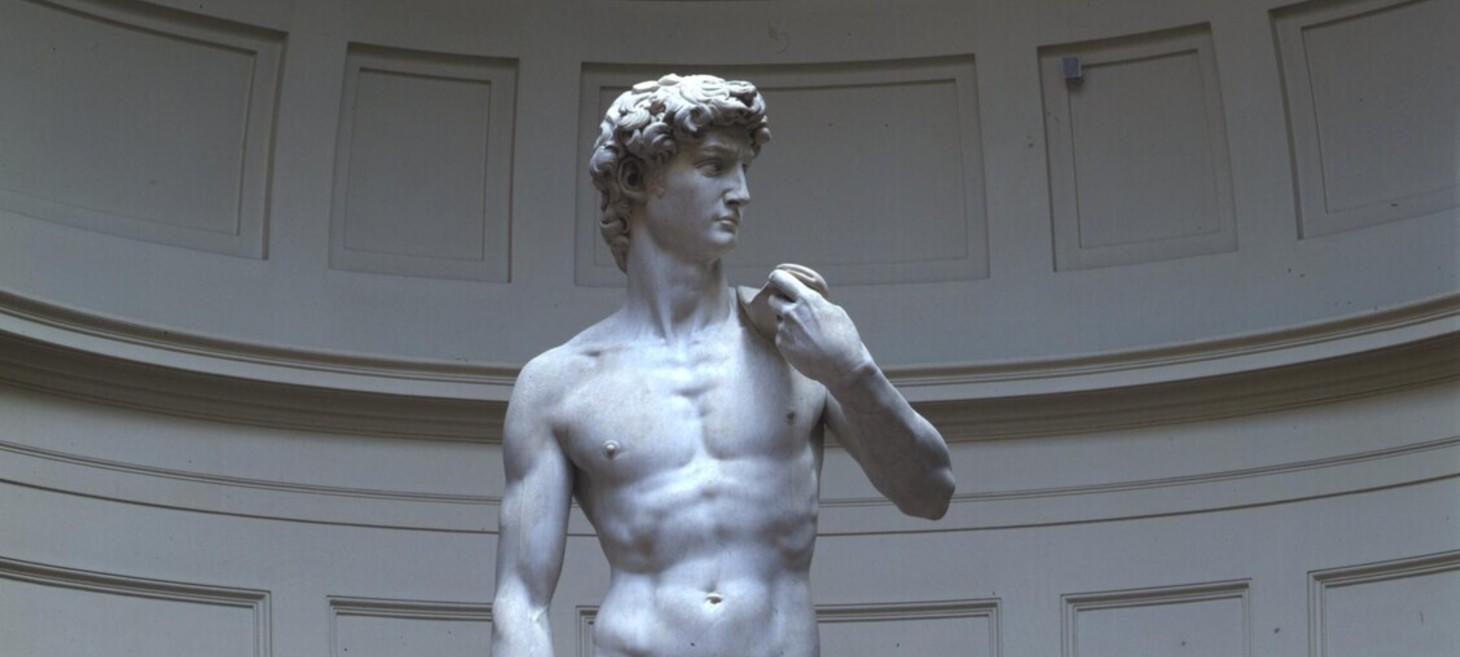 Greetings from Juergen
Greetings from Juergen
Hi all,
This week's stories all circle around the same thorny question: When does borrowing become stealing, and who gets to decide? Leonardo da Vinci's 500-year-old notebook sketches get rendered in stunning 3D animation—brilliant minds separated by centuries playing creative telephone with helicopters and robotic knights. Grace Weston restages art history's most famous paintings with dolls, swapping passive female muses for women who refuse their traditional roles (her upcoming series includes Lee Miller's "fuck you" photograph in Hitler's bathtub). And Meta tries to slap the MPA's PG-13 rating on its teen content filters, prompting a cease and desist letter that basically says: your reputation is so toxic, please stop associating with our carefully built trademark.
Even nature gets in on the remix action. Scientists discovered those zigzag patterns certain spiders weave aren't just decorative flourishes—they're sophisticated tuning devices that help pinpoint where prey lands. Functional design masquerading as pure aesthetics. Meanwhile, I'll admit my bias showed through when discussing gaming films' influence on modern cinema. The Marvel-verse narrative tradition bothers me—violence and power fantasies dressed up as meaningful artistic content. Are these really the templates we want shaping visual culture, or are we just celebrating the same limited stories with better production values?
Art Narratives

Leonardo Da Vinci's Visionary Inventions Rendered in 3d Animation: Helicopters, Robotic Knights, the First Ever Diving Suit & More
A new video from Lost in Time brings Leonardo da Vinci's notebook sketches to life through 3D animation—helicopters, robotic knights, diving suits, and even an 80-foot crossbow requiring a dozen soldiers to operate. Colin Marshall at Open Culture highlights how these renderings help us see Leonardo's work from the perspective of his contemporaries, who would have been amazed to watch a seated knight stand up, open its visor, and reveal no one inside.
What strikes me watching this isn't just the visual spectacle—it's the far harder mental exercise of transporting yourself back to his age. We take electricity, motors, and engines so completely for granted that we forget everything in Leonardo's world was human or horse powered. The video shows his "aerial screw" requiring four men running in circles around a platform just to attempt lift-off.
When you force yourself to imagine a world without any of our powered conveniences, Leonardo's creative leaps become even more staggering—not just inventing the concepts, but designing them within the constraints of muscle power alone.
How much of our own innovation is limited not by imagination, but by the constraints we can't yet see past?
Film & Video

How Classic Gaming Films Continue to Shape Modern Cinema
The Upcoming explores how films like Tron (1982) and WarGames (1983) established a visual and narrative language for gaming cinema—one that persists in everything from The Matrix to modern esports platform design. The piece traces how these classics taught filmmakers to capture digital drama through close-ups on controller grips, code reflections in players' eyes, and that distinctive final-level storytelling structure.
I have to admit, though: I'm not a fan of the Marvel universe. And if we're saying classic "gaming films" are influencing modern cinema, I wish this wasn't just perpetuating comic book hero storytelling. The gaming narrative tradition has been riddled with violence and misogynistic behaviors designed to indulge young boys. So for that to become meaningful artistic content has always been a bit of a stretch for me—this coming from an "old fuddy daddy," of course.
What troubles me is when we celebrate gaming's influence on cinema, we're often celebrating a very narrow kind of story: power fantasies, combat mechanics translated to screen, and worlds where problems get solved through escalating confrontation. Are these really the templates we want shaping our visual culture?
Does elevating gaming aesthetics into cinema expand our storytelling vocabulary, or just reinforce the same limited narratives with better production values?
Public Art

Montreal Artist Envisions What Cities Would Sound like if We Deprioritized Cars
Montreal sound artist Nicola Di Croce has created something I never thought I needed to hear—a city without car noise. Working on Place de la Paix, he documented the plaza's actual sounds, then manipulated them to create an alternate soundscape where the roar of automobiles fades and the sounds of nature and human voices rise to the surface. As Kea Wilson reports in Streetsblog USA, the result reveals something most urban planners overlook: sound shapes how we experience and move through cities just as much as physical design.
I never considered what removing car sounds from your environment might actually sound like. Honestly, it's a fascinating thought experiment. But here's something curious—those sleeping alarm clocks with city noises and car horns? City dwellers sometimes struggle with silence when they vacation somewhere quiet. They find urban noise soothing. Personally, I'll take nature every time.
Di Croce isn't interested in policing sound, which too often becomes discriminatory enforcement—deciding that honking horns are fine while someone busking with a guitar isn't. His approach is more thoughtful: create soundscapes people actually want to hear rather than dictating what they can't.
Would your city sound more human with fewer cars, or would you miss the familiar urban hum?
Societal Impact of Art and Tech

Motion Picture Association Demands Meta Stops Using PG-13 Rating for Teen Accounts
The Motion Picture Association sent Meta a cease and desist letter demanding the company stop using the PG-13 rating for its new Teen Account content filters, reports Chase DiBenedetto at Mashable. The MPA argues Meta's AI-powered moderation can't compare to their decades-old, human-centered rating system, and that any association with Meta's controversial practices will damage public trust in their carefully built trademark.
Honestly, it took me a minute to even understand what the story was about. I never considered PG-13 to be a brand or something copyrightable, but once you think about it, the MPA's concern makes perfect sense.
In Meta's case, anything they endorse these days actually decreases rather than increases trust. When a company already under scrutiny for youth safety failures tries to borrow credibility from an established rating system, you're not adding legitimacy—you're diluting it.
Is borrowing familiar cultural shorthand always fair use, or does context matter when that shorthand represents decades of carefully earned public trust?
Design

Trutru Haptic: a Playful Touch of Technology and Care by JUE Design
JUE Design and Research Studio, collaborating with Hong Kong Polytechnic University's IHMMI Lab, has created TruTru Haptic—a soft, glowing companion device that simulates textures through haptic feedback. As Design Swan reports, it can recreate sensations from smooth stone to falling rain, offering four modes: Companion (mood-responsive), Meditation (breathing cues), Sleep (thermal comfort), and Custom (personalized settings). The design targets therapeutic applications for anxiety, ADHD, PTSD, autism, and dementia through what JUE calls a "sensory language of care."
But here's what nags at me: Can the idea of ergonomics in design ever go too far? We're building devices that anticipate every need, smooth every rough edge, optimize every moment of discomfort. At what point does this caring technology start to feel less like support and more like a cushion against experiencing the world as it actually is?
I think about universal design—how curb cuts help everyone, not just wheelchair users. But TruTru represents something different: technology that mediates our emotional states, that becomes a buffer between us and our own feelings. There's something both compelling and unsettling about outsourcing emotional regulation to a glowing jelly creature.
Is designing away all friction really care, or are we infantilizing ourselves with technology that promises we'll never have to feel uncomfortable again?
Q+ART & Podcast Interviews

Photographer Grace Weston Reclaims the Muse
What if we could rewrite art history's most misogynistic narratives using nothing more than dolls, miniature props, and a camera? Portland photographer Grace Weston does exactly that in her series Reclaiming the Muse, staging subversive reimaginations of famous artworks where women refuse their traditional roles as passive objects. In an interview by Morgan Laurens for Not Real Art, Weston discusses her process of sourcing, altering, and fabricating miniature sets that challenge centuries of male-dominated storytelling.
I came across this piece through Not Real Art's First Friday exhibition series, where Morgan recently curated Witchy Women—a show that features many of Grace's images. The interview itself is fantastic, walking through the wild mythology behind works like "Venus and the Pill" and Weston's clever inversions of pieces like Magritte's "Son of Man," which she transforms by swapping the apple for a ripe papaya in "Ceci N'est Pas un Homme."
What struck me most was Grace's upcoming series, Resistance: Women of a Certain Rage, which will restage iconic moments of female defiance throughout history—including Lee Miller's famous "fuck you" photograph taken in Hitler's bathtub on the very day he died, with Buchenwald mud still on the bathroom rug.
Can miniatures wielding hoses and cigarettes really undo centuries of objectification, or do they simply reveal how absurd those narratives were all along?
Art & Science

Puzzling Spider Web Decorations Revealed to Boost Prey Detection
Scientists have finally solved a centuries-old mystery about those thick, zigzag silk patterns—called stabilimenta—that certain spiders weave into their webs. A new study published in PLoS One by researchers from Denmark, Italy, Sweden, and the UK reveals these decorations aren't just random architectural flourishes. They're sophisticated tuning devices that help spiders pinpoint exactly where prey lands by controlling how vibrations travel through the web. Vasudevan Mukunth reports for The Hindu on this fascinating discovery.
Here's what strikes me about this: spiders are creating art with purpose. These elaborate patterns function as a spectacle—a carefully designed visual element meant to dazzle and ultimately trap their prey. There's something darkly poetic about that creative impulse serving such a predatory function.
The wasp spider doesn't always build these decorations, which only deepens the intrigue. Maybe they're adjusting their artistic approach based on environmental conditions, prey availability, or threats from predators who might spot an elaborately decorated web more easily.
Could the line between functional design and artistic expression be more blurred than we think?
 The Last Word
The Last Word
Thanks for reading this week's exploration of creative borrowing, uncomfortable inheritances, and things pretending to be what they're not. Whether it's technology, aesthetics, or metaphorical frameworks, we're all working with borrowed tools—and the ethics get messy when you start asking who originally owned them and whether they'd approve of what we've built. I'd love to hear your thoughts on where you draw the line between homage and heist.
Best, Juergen


